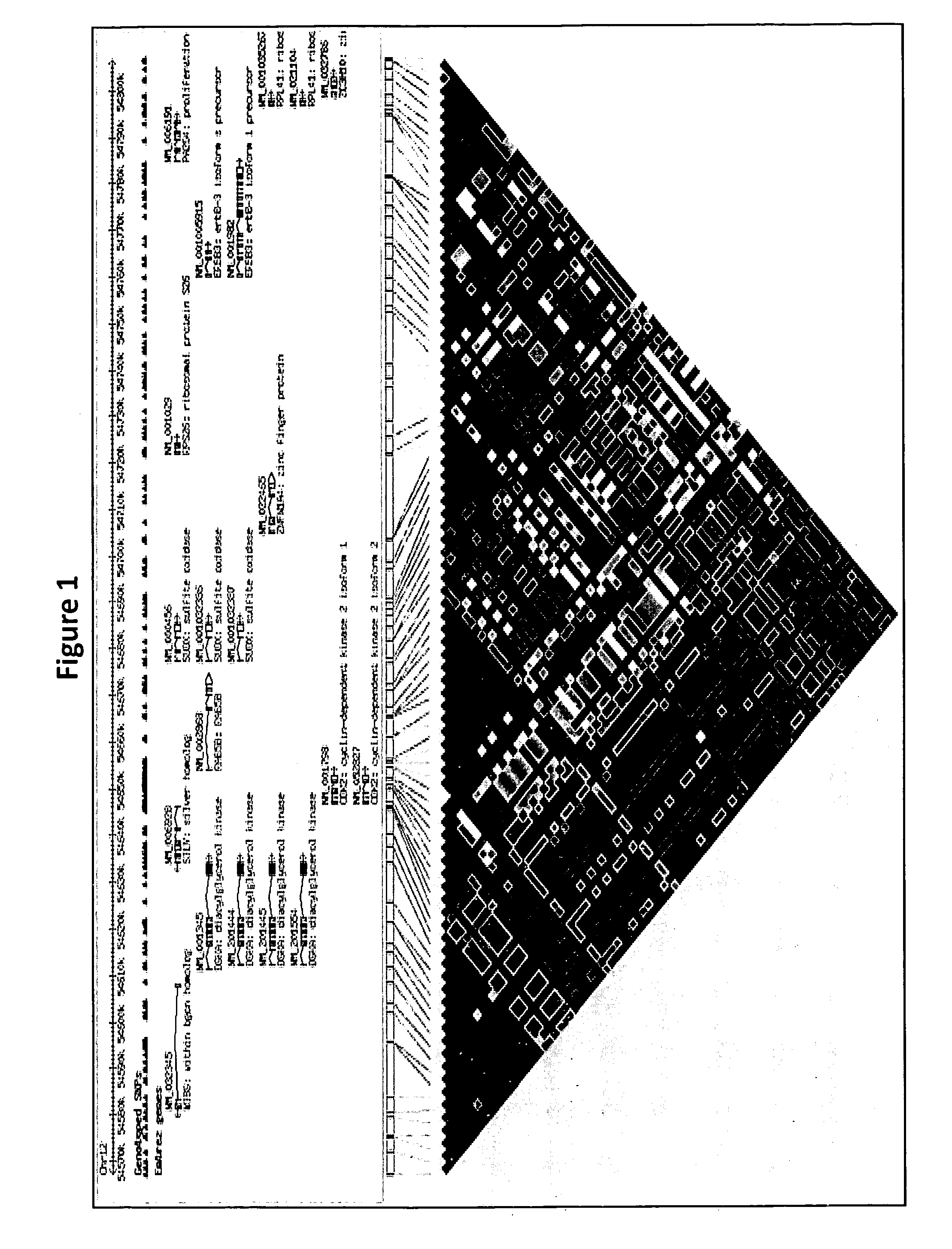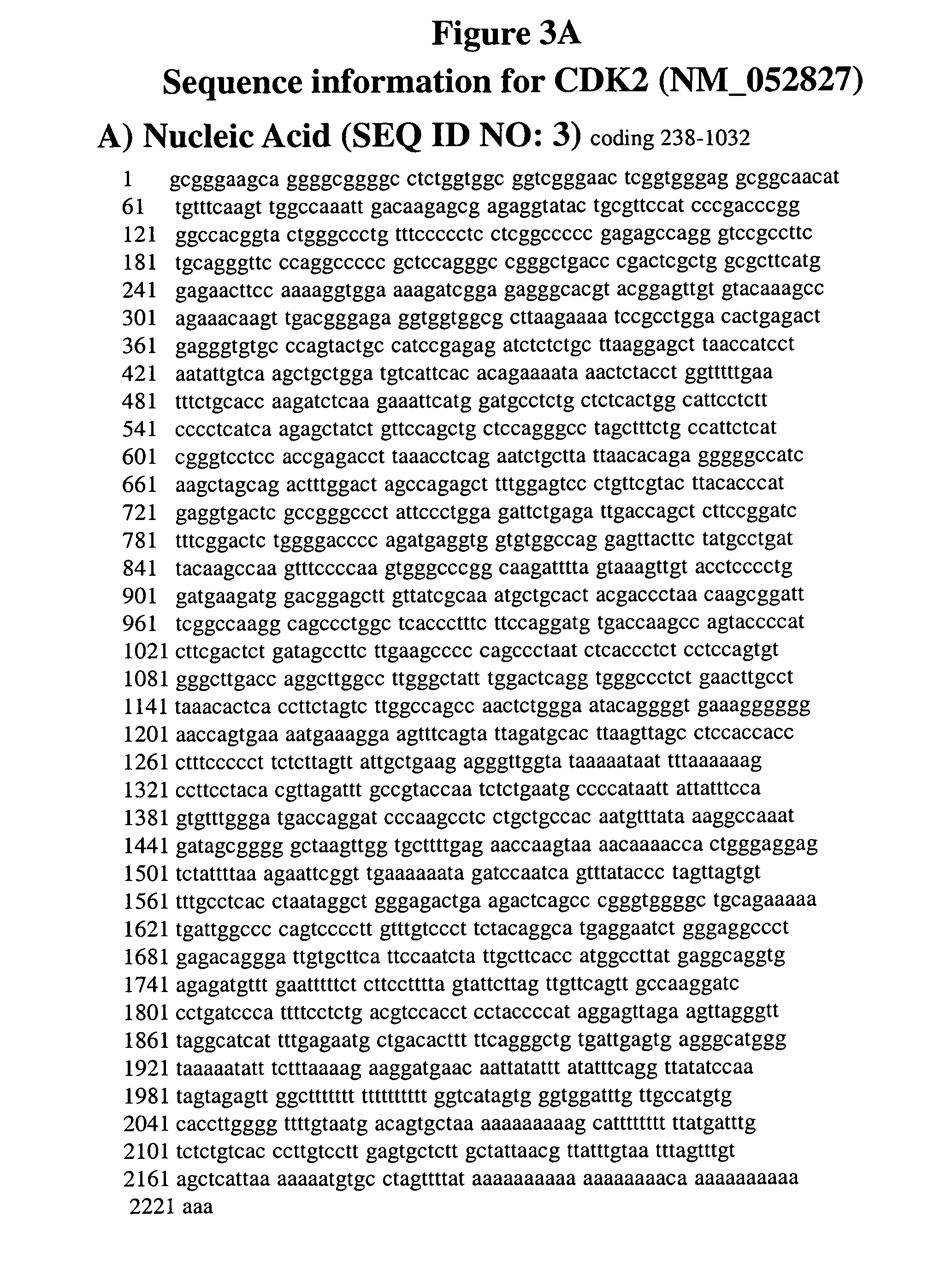Genetic Alterations on Chromosome 12 and Methods of Use Thereof for the Diagnosis and Treatment of Type 1 Diabetes
a technology of chromosome 12 and gene alterations, applied in the field of type i diabetes, to achieve the effect of increasing or reducing the risk of t1d
- Summary
- Abstract
- Description
- Claims
- Application Information
AI Technical Summary
Benefits of technology
Problems solved by technology
Method used
Image
Examples
example i
[0122]550,000 single nucleotide polymorphisms (SNPs) were genotyped with the Illumina Human Hap550 Genotyping BeadChip11 on the study population of 563 T1D probands of European ancestry and 1,146 controls without T1D and with matching ancestry (based on self report) plus 483 complete T1D family trios of the same ancestry. Following this process, 16 trios, 2 cases and 3 controls were removed due to genotyping yields <90%. All patients had clinically proven T1D.
[0123]In the case-control analysis, single-marker allele frequencies were compared using χ2 statistics for all markers while the transmission disequilibrium test (TDT) was used to calculate P-values of transmission distortion from heterozygous parents in affected parent-child trios. The resulting P-values from the case-control and family-based analyses were then combined using Fisher's method12 to quantify the overall evidence for association.
[0124]Association signals were further assessed to identify signals that fulfilled the...
example ii
[0128]To determine if mRNA expression of any of the six genes at the 12q13 locus were under regulatory influence of the SNPs that are present on the HumanHap550 SNP chip and showing association with T1D, the “mRNA by SNP Browser” program was used to query the genes residing within the 12q13 locus with respect to correlation with expression quantitative trait loci (eQTLs). This program can be found on the world wide web at: (sph.umich.edu / csg / liang / asthma). A strong correlation was observed between the most significant T1D associated SNPs and eQTLs for the RPS26 gene (see Table 4). None of the other five genes demonstrated eQTL signals.
TABLE 4eQTL correlation with two Affymetrix probes for the RPS26 gene andthe most significant T1D associated SNPs at the 12q13 locus.Affymetrix ProbeSNP IDEffectH2LODP-value217753_s_atrs10876864−1.14163.9746.382.30 × 10−48234885_atrs10876864−0.5715.9811.652.40 × 10−13217753_s_atrs1701704−1.02447.7533.045.80 × 10−35234885_atrs1701704−0.53212.889.148.80 ...
example iii
[0130]The information herein above can be applied clinically to patients for diagnosing an increased susceptibility for developing T1D, and therapeutic intervention. A preferred embodiment of the invention comprises clinical application of the information described herein to a patient. Diagnostic compositions, including microarrays, and methods can be designed to identify the genetic alterations described herein in nucleic acids from a patient to assess susceptibility for developing T1D. This can occur after a patient arrives in the clinic; the patient has blood drawn, and using the diagnostic methods described herein, a clinician can detect a SNP in chromosome 12. The typical age range for a patient to be screened is between 9 and 12 years of age. The information obtained from the patient sample, which can optionally be amplified prior to assessment, will be used to diagnose a patient with an increased or decreased susceptibility for developing T1D. Kits for performing the diagnost...
PUM
| Property | Measurement | Unit |
|---|---|---|
| size analysis | aaaaa | aaaaa |
| length | aaaaa | aaaaa |
| frequency | aaaaa | aaaaa |
Abstract
Description
Claims
Application Information
 Login to View More
Login to View More - R&D
- Intellectual Property
- Life Sciences
- Materials
- Tech Scout
- Unparalleled Data Quality
- Higher Quality Content
- 60% Fewer Hallucinations
Browse by: Latest US Patents, China's latest patents, Technical Efficacy Thesaurus, Application Domain, Technology Topic, Popular Technical Reports.
© 2025 PatSnap. All rights reserved.Legal|Privacy policy|Modern Slavery Act Transparency Statement|Sitemap|About US| Contact US: help@patsnap.com



